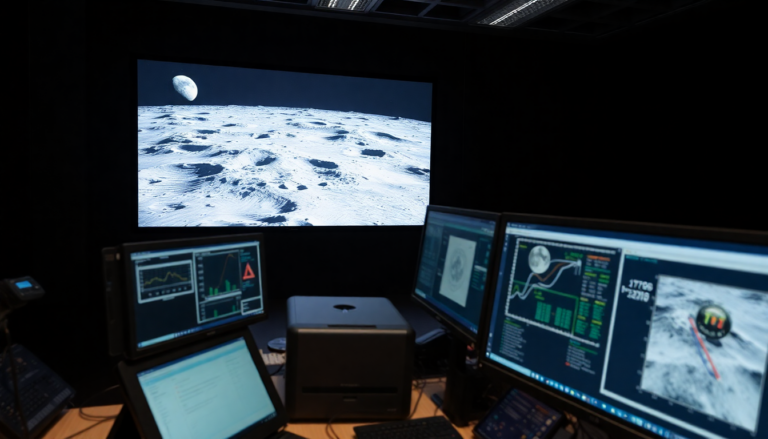Argomenti trattati
In a significant leap towards future lunar exploration, Japan’s space agency, JAXA, has announced a groundbreaking partnership with Spirent Communications. This collaboration aims to develop the first-ever lunar navigation simulation solution. By utilizing advanced Earth-based technologies, this initiative will enable accurate testing and validation of Positioning, Navigation, and Timing (PNT) systems before they are deployed in space. This innovative approach is crucial as we look to establish a sustainable presence on the Moon and beyond.
As space missions extend further from Earth, the demand for reliable navigation systems becomes increasingly critical. Traditional Global Navigation Satellite Systems (GNSS) face limitations in space due to signal degradation and the absence of satellites orbiting the Moon. Recognizing this challenge, JAXA’s collaboration with Spirent Communications focuses on creating a simulation that can replicate the lunar environment. This initiative not only addresses the immediate needs of lunar missions but also sets the stage for future deep-space exploration.
The newly developed simulation system will integrate realistic testing of S-band signals alongside traditional GNSS. This dual approach allows engineers to craft highly precise lunar navigation scenarios, providing a comprehensive understanding of how these systems will operate in the unique conditions of the Moon. The ability to simulate various scenarios on Earth is invaluable, as it reduces the risk associated with actual missions and accelerates the timeline for deployment.
Benefits of Earth-based simulation technologies
Earth-based simulations are becoming increasingly important in the realm of space exploration. They provide a controlled environment where engineers can test and refine their systems without the high costs and risks associated with actual space missions. By utilizing cutting-edge technology, such as those developed by Spirent Communications, JAXA can ensure that its lunar navigation systems are robust and reliable. This proactive approach is essential for addressing potential challenges before they arise during actual missions.
The future of lunar exploration
The collaboration between JAXA and Spirent Communications represents a pivotal moment in the journey towards sustainable lunar exploration. As space agencies worldwide look to establish a permanent human presence on the Moon, the importance of advanced navigation systems cannot be overstated. This partnership is not just about immediate mission success; it is about laying the groundwork for future generations of explorers.
Implications for global space agencies
The advancements made through this collaboration could have ripple effects across the global space community. Other space agencies may look to adopt similar simulation technologies as they plan their lunar missions. This could foster a new era of cooperation and innovation in space exploration, as agencies share insights and technologies. By working together, they can collectively overcome the challenges posed by deep-space navigation.
Conclusion
As we stand on the brink of a new chapter in space exploration, the partnership between JAXA and Spirent Communications highlights the importance of innovation and collaboration. Through their efforts, we are moving closer to realizing the dream of lunar exploration and establishing a sustainable presence on the Moon. The advancements made in lunar navigation will not only enhance mission success but also inspire future generations to reach for the stars.

